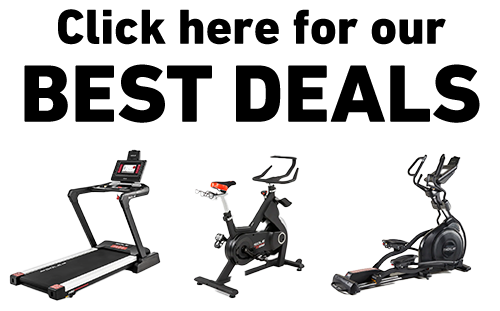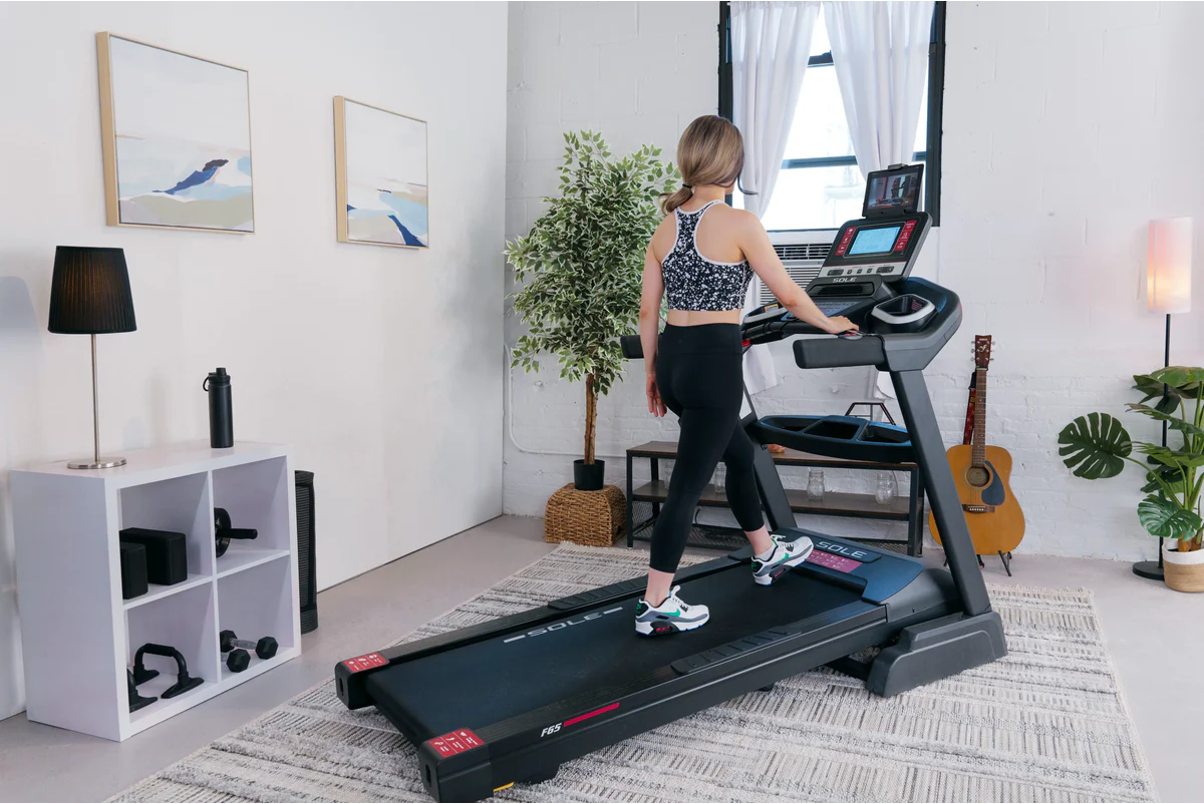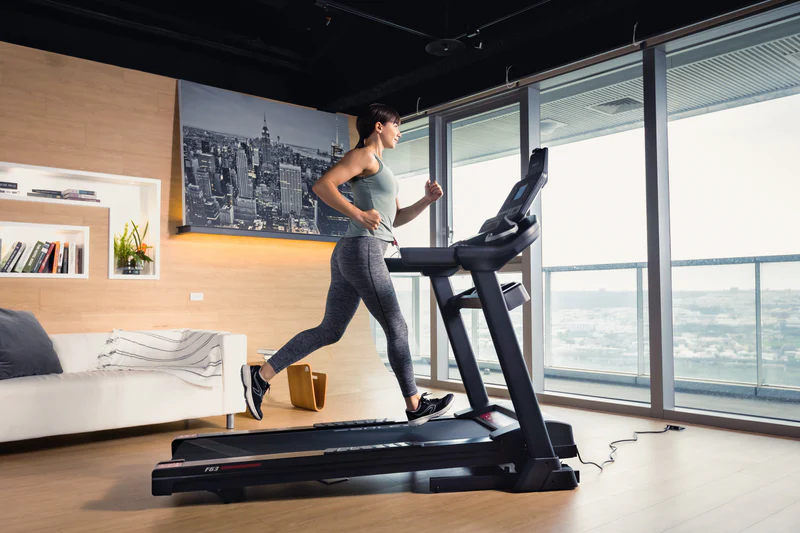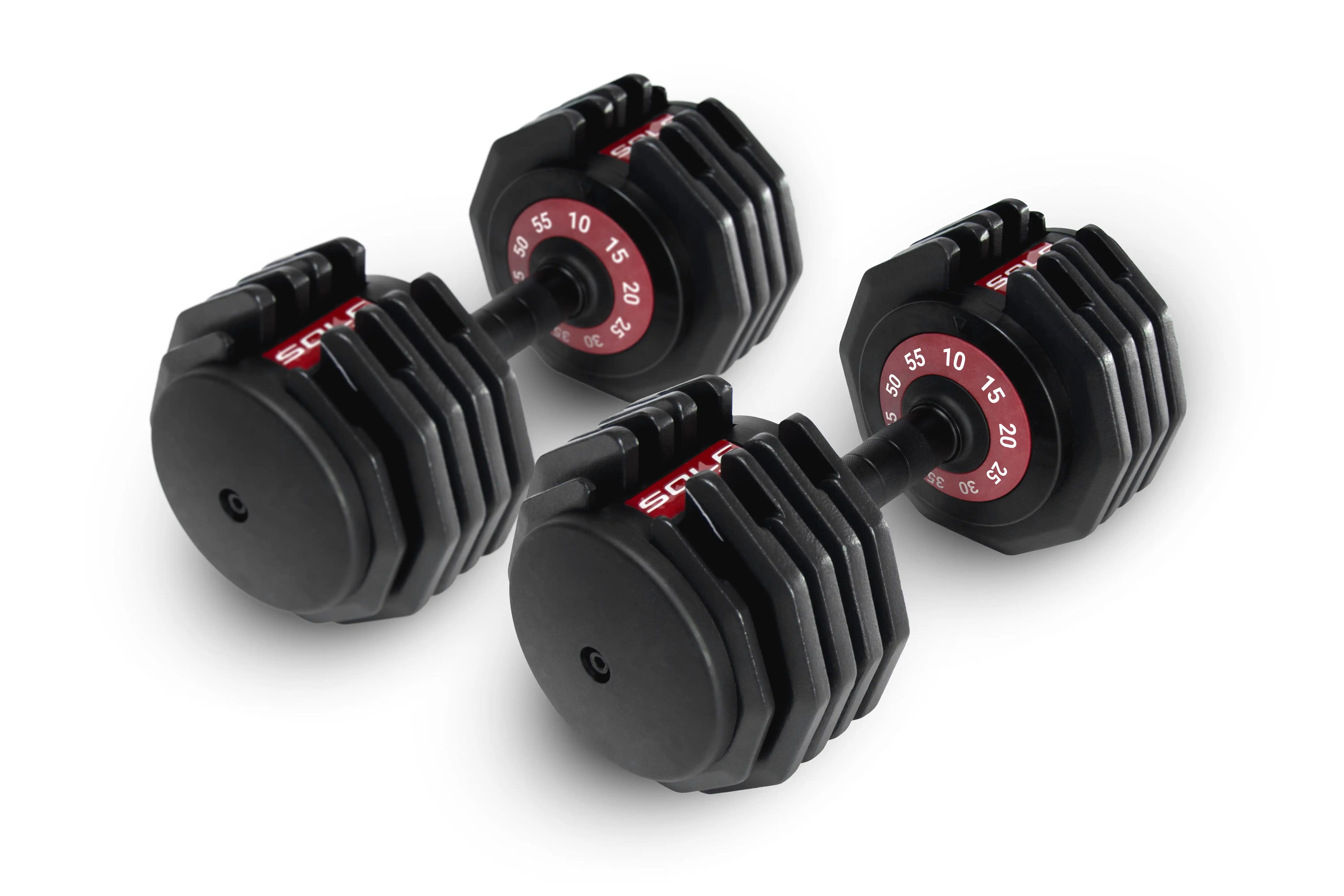Key Takeaways
- The 3-2-1 workout method is a balanced fitness approach that combines 3 cardio sessions, 2 strength workouts, and 1 flexibility session per week.
- This method requires only 3–4 hours weekly, making it achievable for busy people while providing comprehensive fitness development.
- Scientific principles of recovery and progressive overload are built into the program, helping prevent burnout and injury.
- You need minimal equipment to start—most exercises can be done with just your body weight and a good pair of shoes.
- SOLE equipment transforms the simple 3-2-1 method into a sustainable lifestyle by providing professional-grade treadmills and ellipticals for your 3 weekly sessions, and adjustable dumbbells for progressive strength training.
A Simple Fitness Plan That Actually Works
Starting a fitness journey can feel like jumping in the deep end without knowing how to swim.
The fitness world is packed with complex routines, conflicting advice, and intimidating gym environments that leave beginners feeling lost.
The 3-2-1 workout method cuts through this noise with a simple approach that actually works.
At its core, the 3-2-1 workout is a numerical recipe for balanced fitness: 3 cardio sessions, 2 strength training workouts, and 1 dedicated flexibility session per week. (Image courtesy of WikiHow)
|
At SOLE, we're proud to offer top-quality exercise equipment designed for home and gym use. Our machines are built to meet the highest standards of durability and performance, making them ideal for fitness enthusiasts at any level. SOLE Products
|
What Is the 3-2-1 Workout Method?
The 3-2-1 workout method is a straightforward weekly exercise framework designed for fitness beginners and those returning after a long break.
The Simple Formula
The beauty of the 3-2-1 method lies in its clarity. Your 3 cardio sessions improve heart health and build endurance through activities like walking, cycling, or swimming. These don't need to be high-intensity. Even brisk walking counts, especially when you're starting out.
The 2 strength sessions focus on building muscle through bodyweight exercises or light weights. You'll target different muscle groups to develop full-body strength.
The single flexibility session improves your range of motion through stretching, yoga, or simple mobility work. People often neglect this aspect of fitness, but it's essential.
Unlike complex programs that require specialized knowledge or equipment, you can adapt the 3-2-1 method to any fitness level or preference.
A complete beginner might start with walking for cardio, basic bodyweight exercises for strength, and gentle stretching for flexibility. As you progress, you can increase intensity or try new activities while keeping the same balanced structure.
The 3-2-1 breakdown looks like this: 3 cardio sessions like walking, jogging, cycling, swimming, or dance. 2 strength sessions using bodyweight exercises, resistance bands, or light weights. 1 flexibility session with stretching, yoga, or mobility exercises.
Why This Approach Beats Traditional Plans
Most beginners make the mistake of focusing too heavily on just one aspect of fitness. They do all cardio or all strength training. This creates imbalances that can lead to plateaus, boredom, and even injury. The 3-2-1 method prevents these issues by incorporating all three fitness pillars from day one.
This balanced approach also provides psychological benefits that keep you motivated. The variety prevents boredom, while the structure eliminates decision fatigue. You always know what type of workout you're doing each day.
Because you're working different aspects of fitness, you'll notice improvements in multiple areas of your life. You'll have more energy throughout the day and find everyday movements easier.
Just 3–4 Hours Per Week
One of the biggest barriers to fitness is thinking it requires hours in the gym every day. The 3-2-1 method proves this myth wrong.
With sessions averaging 30–40 minutes each, your total weekly time commitment is only 3–4 hours. That's less time than many people spend watching TV in a single day!
Your 3 Cardio Sessions
The cardio component of the 3-2-1 method gradually builds your cardiovascular endurance without causing burnout.
Low-Intensity Steady State (LISS)
Your LISS session builds a strong cardiovascular foundation at a comfortable pace. This is a longer workout of 30–45 minutes where you maintain a steady, conversational pace throughout. You should be able to talk without gasping for breath. Work at about 50–60% of your maximum effort.
Walking, gentle cycling, swimming at a relaxed pace, or using the elliptical are perfect LISS activities. LISS builds endurance while being gentle on your joints. It helps your body become more efficient at using fat for fuel.
Interval Training
Your interval session introduces your body to brief periods of higher intensity followed by recovery periods. This doesn't mean all-out sprinting. For beginners, it might simply mean walking faster for 30 seconds, then returning to normal pace for 90 seconds. Repeat this pattern for 20–25 minutes.
Intervals teach your body to recover more efficiently and improve your cardiovascular capacity faster than steady-state training alone. As you progress, you can gradually increase the intensity of work periods and decrease recovery times. The total session should be shorter than your LISS day.
Usually 20–30 minutes is plenty, including warm-up and cool-down. This type of training delivers impressive fitness gains in minimal time, perfect for busy schedules.
Fun Cardio Activity
Your third cardio session is all about enjoyment and sustainability. Choose an activity you genuinely look forward to. This could be dancing, hiking, recreational sports, or anything else that gets your heart rate up.
The psychological benefits of this session are just as important as the physical ones. It reinforces the idea that movement can and should be enjoyable. It prevents the mental fatigue that often leads people to quit workout programs. When you associate exercise with pleasure rather than obligation, you build habits that can last a lifetime.
Don't worry about tracking intensity or hitting specific targets on this day. Just move in ways that bring you joy for at least 30 minutes. Many beginners find this fun session becomes the highlight of their fitness week.
It often serves as the gateway to trying new activities they might not have considered before. It's also a great opportunity to involve friends or family, making fitness social rather than solitary.
If you have joint issues or mobility limitations, water-based activities like swimming or aqua jogging provide all the cardiovascular benefits with minimal impact.
Cardio Options for Different Fitness Levels
If you're completely new to exercise or returning after a long break, start with walking as your primary cardio activity. It requires no special equipment beyond supportive shoes, can be done anywhere, and easily adjusts to your fitness level.
As you build confidence, gradually add gentle jogging intervals, cycling, or other activities that interest you. Start where you are, not where you think you should be.
Your 2 Strength Training Sessions
Upper Body Focus Day
Your upper body session targets chest, back, shoulders, and arms through compound movements. Begin with 4–5 basic exercises performed in 2–3 sets of 8–12 repetitions each. Rest 60-90 seconds between sets.
Push-ups form an excellent starting foundation. You can modify them against a wall or counter for beginners. Add dumbbell rows, shoulder presses, and bicep curls. The goal isn't to lift heavy weights but to learn proper form and create a mind-muscle connection that will serve you throughout your fitness journey.
Focus on quality of movement rather than quantity. Five perfect push-ups beat 15 with poor form that could lead to injury. As you gain strength, you'll naturally increase repetitions or resistance. Record your workouts in a simple journal to track progress. This tangible evidence of improvement becomes powerful motivation over time.
Lower Body and Core Focus Day
Your lower body and core session targets legs, glutes, and abdominal muscles. These are the largest muscle groups in your body that drive most daily movements. Basic exercises like squats, lunges, bridges, planks, and modified sit-ups create a solid foundation.
Start with 4–5 exercises performed in 2–3 sets of 8–12 repetitions. Focus on proper form above all else. These exercises improve stability, enhance posture, and build functional strength that translates directly to everyday activities like climbing stairs or carrying groceries.
Bodyweight vs. Weights for Beginners
Many beginners wonder whether they should start with bodyweight exercises or free weights. Bodyweight training provides more than enough resistance for most beginners to see significant improvements in strength and muscle tone.
Master proper form with your own body weight first. This creates a solid foundation and reduces injury risk before adding external resistance.
Push-ups, squats, lunges, and planks can all be modified to match your current fitness level while still providing effective resistance training. As you progress, you can add resistance bands or light dumbbells to increase the challenge.
Make this transition gradual. Adding external resistance before mastering proper movement patterns increases injury risk and may actually slow your progress.
Your 1 Flexibility Session
Flexibility training improves range of motion, reduces post-workout soreness, decreases injury risk, and can even help alleviate stress through mindful movement and breathing.
Why Flexibility Prevents Injuries
Many fitness beginners experience setbacks due to minor injuries that proper flexibility work could have prevented. When muscles and connective tissues become tight from daily activities and new exercise routines, they restrict your range of motion. It stresses your joints and can lead to compensatory movement patterns that cause pain over time.
Regular flexibility training maintains or improves your range of motion. This ensures your joints can move freely through their intended range. It reduces strain on surrounding tissues and helps your body maintain proper alignment during both exercise and daily activities. Think of flexibility training as preventative maintenance for your body. It's a small investment that prevents much larger problems down the road.
A Simple 20-Minute Routine
A basic flexibility session should target all major muscle groups, with particular attention to areas that tend to become tight from modern lifestyles. These areas include hips, lower back, shoulders, and chest. Hold each stretch for 20–30 seconds while breathing deeply. Focus on relaxing into the stretch rather than forcing it.
Include dynamic movements like gentle arm circles or hip rotations at the beginning. Follow with static stretches for your major muscle groups. End with a few minutes of total relaxation in a comfortable position. This allows your body to integrate the work you've done.
Transform Your 3-2-1 Method with SOLE Home Fitness Solution
You can absolutely start with just bodyweight exercises, but having quality home equipment opens up so many more options and keeps you consistent year-round.
For your 3 cardio sessions, SOLE's treadmills like the F63, F80, F85, F89, TT8, and ST90 are perfect. You can easily do your LISS session with a comfortable walk, crank up the speed for interval training, and even add incline for your "fun" cardio day to simulate hiking. The Cushion Flex Whisper Deck reduces impact by 40%, which means your joints stay happy even as you build endurance. Plus, the SOLE+ app (free with all equipment!) gives you guided cardio workouts that perfectly match the 3-2-1 intensity levels.
Your 2 strength sessions get a massive upgrade with the SW180 Adjustable Dumbbells. Instead of cluttering your space with multiple weights, you get options from 5–80 pounds with a simple twist. Start light as you master form, then progressively increase, exactly what the 3-2-1 method recommends. Pair them with the SW116 Weight Bench for even more exercise variety.
Don't forget that flexibility session! The SOLE Equipment Mat provides the perfect cushioned surface for stretching and yoga, protecting both you and your floors.
Ready to take your 3-2-1 journey to the next level? Check out the SOLE equipment collection today!
Frequently Asked Questions (FAQ)
Can I do more than one session per day?
While it's technically possible to combine sessions, it's not recommended for beginners. The 3-2-1 method spreads workouts throughout the week for adequate recovery between sessions.
If your schedule absolutely requires combining sessions occasionally, pair cardio with flexibility rather than doing two intense sessions back-to-back. For most beginners, shorter, more frequent workouts produce better results and higher adherence rates than occasional marathon sessions.
How long before I see results?
You'll likely notice improvements in energy levels and mood within the first two weeks. Physical changes become noticeable after 4–6 weeks of consistent training, though this varies based on your starting point, genetics, nutrition, and sleep habits.
Internal improvements in cardiovascular health and muscle strength often come before visible changes. Track objective measures like walking distance, number of repetitions, or recovery time to recognize your progress.
Is 3-2-1 good for weight loss?
Yes, the 3-2-1 method creates an excellent foundation for healthy, sustainable weight management when combined with appropriate nutrition. The combination of cardio, strength training, and flexibility work increases daily energy expenditure while building muscle. This can increase your metabolic rate over time.
For weight loss specifically, also address nutrition by creating a modest calorie deficit through portion awareness and choosing nutrient-dense whole foods. The balanced nature of 3-2-1 makes it particularly effective for long-term weight management compared to programs that focus only on cardio.
Can I modify it for joint problems or injuries?
Absolutely. The 3-2-1 method adapts well to various physical limitations. For joint issues, focus on low-impact cardio options like swimming, cycling, or elliptical training rather than running or jumping.
For strength training, reduce ranges of motion as needed, use resistance bands instead of weights, or try water-based resistance training to remove gravitational stress from joints.
If certain movements cause pain (not just discomfort from exertion), modify or substitute them immediately. There's almost always an alternative exercise that targets similar muscle groups without aggravating existing conditions.
Working with a physical therapist or qualified trainer for even just one or two sessions can help develop modifications specific to your needs.
How can SOLE equipment make the 3-2-1 method easier to stick with long-term?
For those 3 cardio sessions, having options really helps. Maybe Monday you feel like walking on a treadmill while watching your favorite show. Wednesday you switch to the elliptical for lower impact intervals. Friday you hop on the exercise bike for your fun cardio. This variety keeps things interesting without leaving your house.
The strength training becomes way more effective too. With the SW180 adjustable dumbbells, you're not limited to just bodyweight moves. You can start with 10-pound goblet squats and gradually work up as you get stronger.
No driving to the gym, no waiting for equipment, just twist the dial and you're ready!







Leave a comment
This site is protected by hCaptcha and the hCaptcha Privacy Policy and Terms of Service apply.